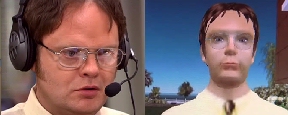Here I am . . .
After taking a bit of a summer hiatus I have decided that it is time to resurrect the old blog and start writing again. Pulling out the pen (or keyboard…) again is proving to be quite the arduous task. I figure I better start getting the words flowing again. It’s like they say if you don’t use it…. you lose it!
So I bet y’all are wondering what I have been up to and what has been the main reason for me going AWOL this summer. Truth be told I really don’t have that good of an excuse. I wish that I could tell you I was off on some sort of spontaneous adventure in the outback of Australia or trekking through the jungles of Costa Rica, or helping with the re-building effort in Haiti, but that simply has not been the case. Instead I have spent my days locked up in a cubicle in front of a computer screen, working for the Man.
What’s New…
It actually hasn’t been as bad as I am making it sound. Actually, I have spent my summer as a co-op student at Natural Resources Canada, which has proven to be a great experience. I am working as a reference librarian in the NRCan Library. This co-op term has actually given me a taste of what it is like to be a librarian in real-life. I am very happy with my decision to participate in the co-op program. It’s definitely provided me with an invaluable educational experience and practical knowledge which will help me find gainful (permanent) employment, a task which is part of my very near future.
To kick-off what will be another fantastic blogging season, I decided that I should share some experiences from my co-op term thus far and how I have both used and developed the skills acquired from my MLIS, and spotted gaps in my education.
Alison Wetheral: Reference Librarian
This summer I have been an active member of the Information Services team @ the NRCan Library. At first I was a little worried about taking on such a role. I was posted in the NRCan Library-Earth Sciences. Coming from a background in arts, this was a little frightening. I didn’t even take Rocks with Jocks as my science credit in my undergrad! Entering into a position in which I would be assisting top-notch scientists in fulfilling their information needs in a subject as to where I knew little to nothing about was terrifying. That being said, I think that the possibility of learning a new field is one of the major perks of being a librarian. You never stop learning! (and you get paid for it!)
My reference course definitely prepared me to jump into a field and provide reference services. The course taught me about the issues of authority and credibility which pushed me to find which were the go-to sources in the Earth Sciences. You never really realize the importance of the reference interview until you are required to answer a question related to a field in which you really have no prior knowledge.
Alison Wetheral: Competitive Intelligence Agent
Besides reference, another service that we provide to the department is a publication called RADAR. Basically, it provides members of the department with a one-stop-shop to the latest news items, articles from science and policy magazines, and publications that are related to the work of the department. Upon arrival at NRCan I was assigned the task to compile RADAR. Every week I read magazines and newspapers to find the latest news in energy, earth sciences, metals and minerals, climate change etc. and compile them on a page in the wiki. The page is intended to be a competitive intelligence tool, enabling members of the department to stay current and to ensure that their work is relevant. It is also intended to inform members of the department how their work is being received by the public at large.
This has been great in learning exactly what the department does, and helps me stay current, which as librarians, we have a duty to be. I also implemented skills I learned while completing my technology requirements. For any new MLISers take as many tech classes as you can! They are so helpful! Libraryland depends on technology to function. Without Web Design I would be a useless member of the Information Services team. My Social Media class which taught me about the emerging Web 2.0 technologies was also very helpful. RSS and widget technology are big contributors to how I compile RADAR.
So there you have it! A little update with whats going on and with that ………We’re back! (Jimmy Fallon on SNL anyone…. anyone…)
Stay tuned for what will be an epic (or not so epic) blogging season!!!








 The task that Professor Neal asked us to complete this week was to join a social media application that focuses on social bookmarking or tagging. For this week’s task I decided to join Yahoo’s delicious. Delicious is a social bookmarking site that allows you to tag, manage and share web sites all in one place. I had heard of delicious prior to this week’s lesson, but never realized its real benefits until I started using it.
The task that Professor Neal asked us to complete this week was to join a social media application that focuses on social bookmarking or tagging. For this week’s task I decided to join Yahoo’s delicious. Delicious is a social bookmarking site that allows you to tag, manage and share web sites all in one place. I had heard of delicious prior to this week’s lesson, but never realized its real benefits until I started using it.
